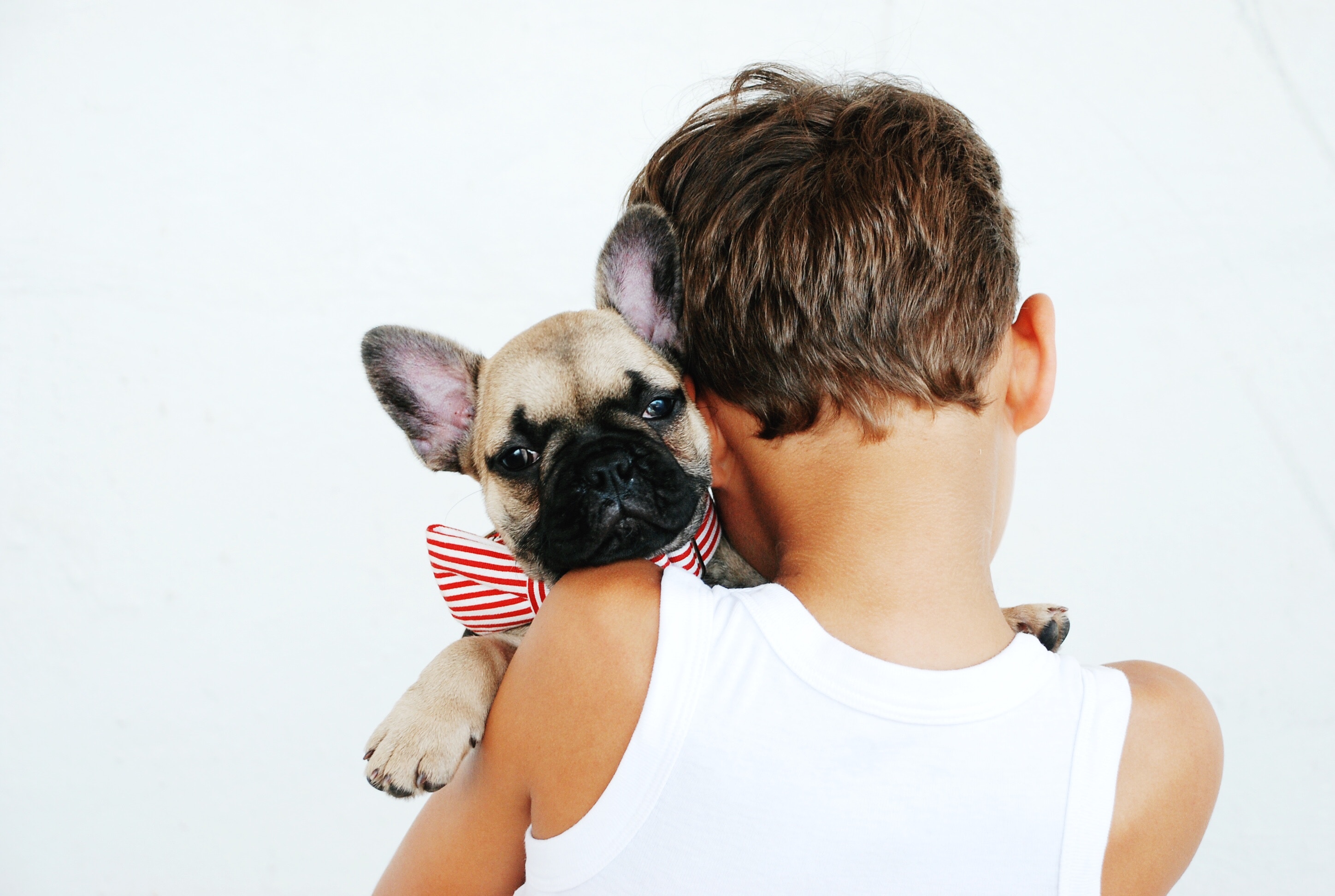
Kids love dogs. And dogs love kids. History abounds with tales of children and dogs being the best of friends. Some examples include Snoopy, Old Yeller, Lassie, Benji, Petey, Toto, Clifford, and their kid companions. About half of all U.S. families own one or more dogs, and according to AACAP, the American Academy of Child & Adolescent Psychiatry, pets can provide the following benefits to children:
Children who are fortunate enough to have dogs or other pets as household members can realize benefits that will continue to serve them well throughout their lives. Not only will they enjoy the advantages described above, but if dogs or other pets are introduced within the first few years of a child’s life, those kids are much less prone to developing pet, grass, ragweed or mite allergies later in life according to Web MD
However, some dogs can be particular enough to warrant following some tried and true guidelines in order to properly introduce children to dogs and vice versa. According to Rural Dog Rescue, about 1,000 people seek emergency treatment for pet injuries each day. So, it’s important to introduce children to dogs the right way.
Dogs, in particular, are very hierarchical with their social system. After all, they are pack animals. While many dogs will view adults as the “alpha” in their system, children may not be seen as the alpha, but as more of an equal or even a subordinate. Children are full of energy, and this can cause issues if a kid is too aggressive or forceful with a dog, especially in the initial introduction. If a kid and dog each have a lot of energy, the combination can make for a really fun introduction. And a good way to facilitate this high energy encounter would be to utilize a physical barrier such as Richell’s Pet Gates which would allow for the introduction to commence while energy levels moderate.
But, if a kid has lots of energy and the dog is older or doesn’t have a high energy level, the encounter can become problematic. The same holds true if a dog is full of excitement, but a kid is more reserved. In this case, a good option would be to utilize a crate like Richell’s Pet Crates to allow the child as much time and space to interact with the dog without fending off excitable dog behavior.
Everyone wants a positive outcome when children are first introduced to dogs, and with proper preparation, foresight, and care, the introduction of kids to dogs can be fun and uneventful. The key is to match expectations as closely as possible by utilizing the should and should not do tips below to ensure that introducing kids to dogs is a positive experience for all.
According to Rural Dog Rescue, Preventive Vet and Dog Health
Kids and dogs have created amazingly strong bonds for millennia. It’s a natural alliance that lasts a lifetime when started off on the right foot. It’s critical for both the short-term and long-term well being of kids and dogs that this relationship starts off the correct way. By following the tips above and employing a dose of quiet confidence with a bit of caution and just the right amount of enthusiasm, a kid’s introduction to a dog can be a wonderful and rewarding experience that will remain with them forever.
25 Spring Cleaning & Organizational Tips for Pet Parents
02.28.2019
Spring has almost sprung! It is officially only a few weeks away, and in some parts of the country tree buds are beginning to show blossoms or leafing out, and the grass is starting to green up. >>> READ MORE
 A Double Dip New Year’s Resolution
A Double Dip New Year’s Resolution
01.07.2019
Exercising with your pet so everyone is more fit! In January, Mother Nature has much of the Northern Hemisphere locked in an icebox or, at the very least, has the “thermostat” turned way down. >>> READ MORE
Please complete this form and click "Submit". Our Customer Support team will gladly address your request and respond in a timely manner.
Richell USA, Inc.
Copyright © Richell, Inc.. All rights reserved